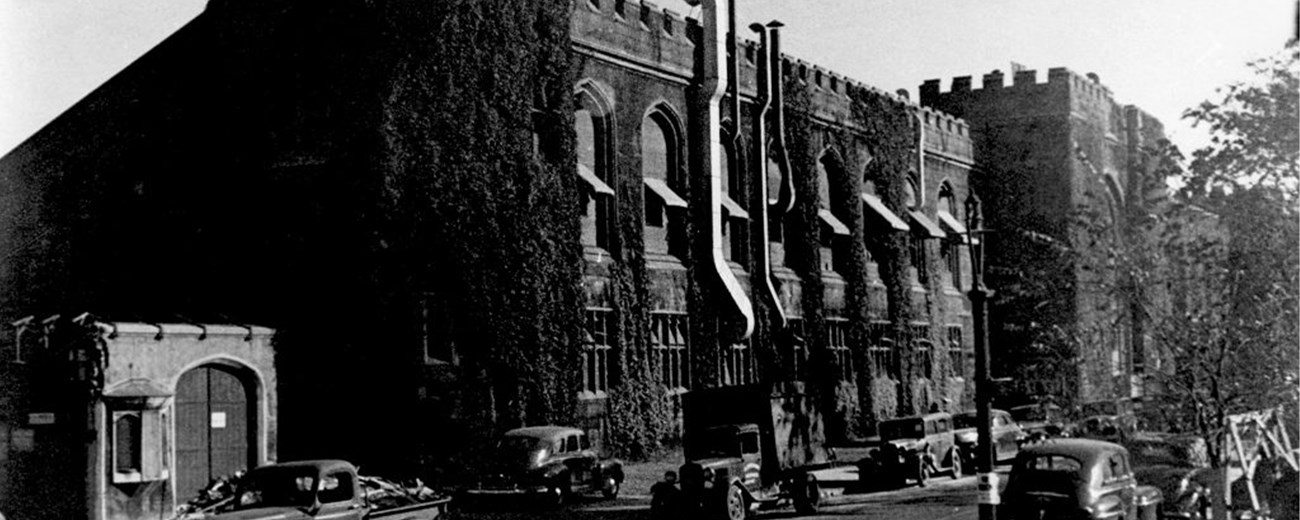Last updated: June 21, 2023
Article
Chicago, IL

Courtesy of the Atomic Heritage Foundation and the National Museum for Nuclear Science & History
Begun by the need to determine whether a nuclear chain reaction could be created and controlled, Manhattan Project administrators selected the University of Chicago as the site of the Metallurgical Laboratory (Met Lab), a code-named facility that would bring together dozens of top scientists to research whether a controlled nuclear reaction, a key step in atomic bomb creation, could be achieved.
Led by Arthur Compton, the Met Lab assembled a team of scientists that included Enrico Fermi, Leo Szilard, Eugene Wigner, and Leona Woods Marshall Libby, the youngest member and only female member of the team. On a squash court underneath the university’s unused Stagg Field football stands, the scientists and workers built a 20-foot-tall (6 meter) stack of graphite and uranium blocks over a two-week period, creating space for control rods and purifying the graphite and uranium.
Unlike other nuclear reactors that would come later, the Met Lab’s experiment had no safety features- no shielding from radiation and no way to cool the reactor. Fermi assured Compton that the likelihood of a catastrophic failure (on the campus of one of the country’s most populous cities no less) was slim, but the outcome was never certain.
On December 2, 1942 at 3:53 pm CST, with the control rods carefully removed, their creation, dubbed the Chicago Pile (CP-1), reached criticality. It was the first time in history that a self-sustaining nuclear reaction had been achieved. The scientists celebrated with a bottle of Chianti, as a vital step toward the nuclear age had proved successful.
The outcome of CP-1's success led to the construction a few months later of Oak Ridge’s X-10 Graphite Reactor, the world’s first full-scale experimental reactor that served as the basis for the massive plutonium-producing reactors at Hanford. Though CP-1 was disassembled shortly after the experiment, the site of its construction was dedicated a National Historic Landmark in 1967.
- Atomic Heritage Foundation. "Chicago, IL." Chicago, IL – Nuclear Museum
- The Manhattan Project: An Interactive History. "CP-1 Goes Critical." Manhattan Project: CP-1 Goes Critical, Met Lab, December 2, 1942 (osti.gov)
- UChicago News. "The First Nuclear Reactor, Explained." The first nuclear reactor, explained | University of Chicago News (uchicago.edu)
